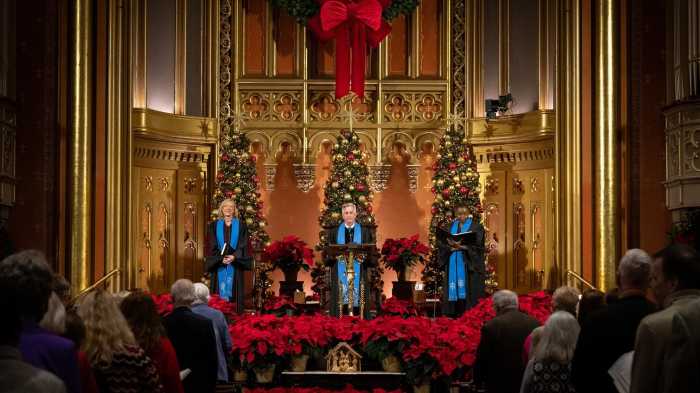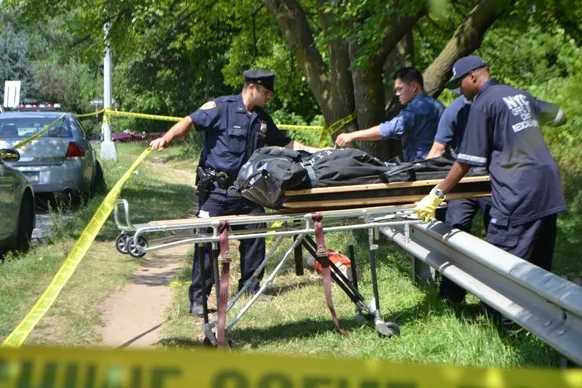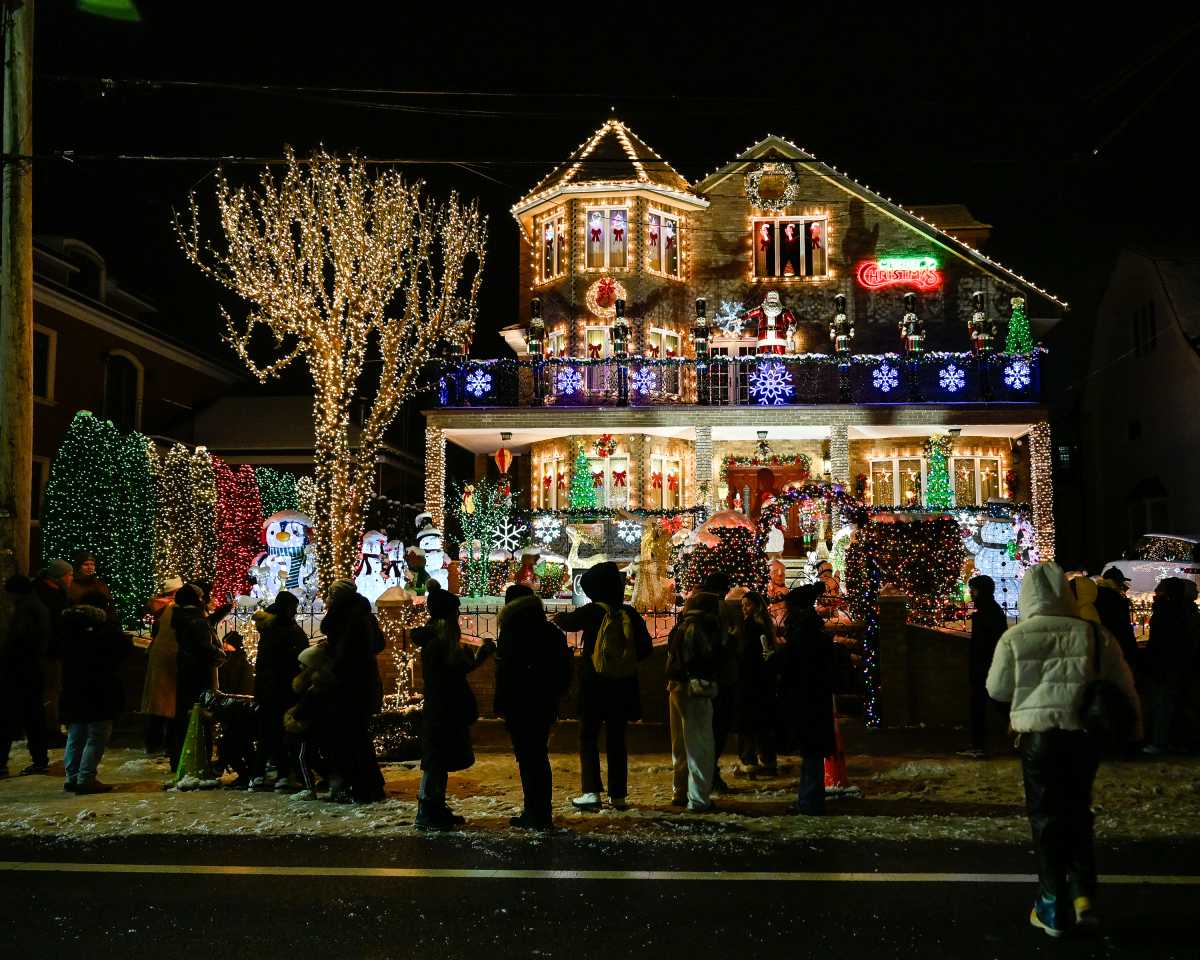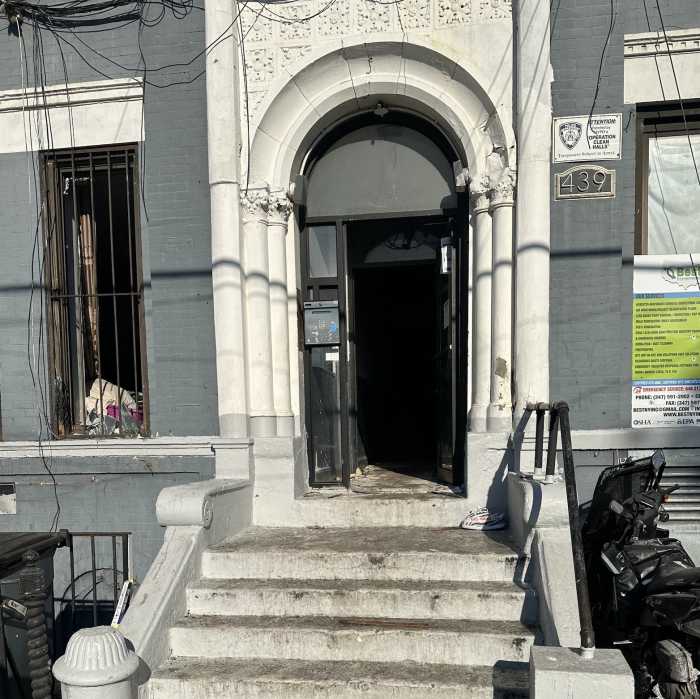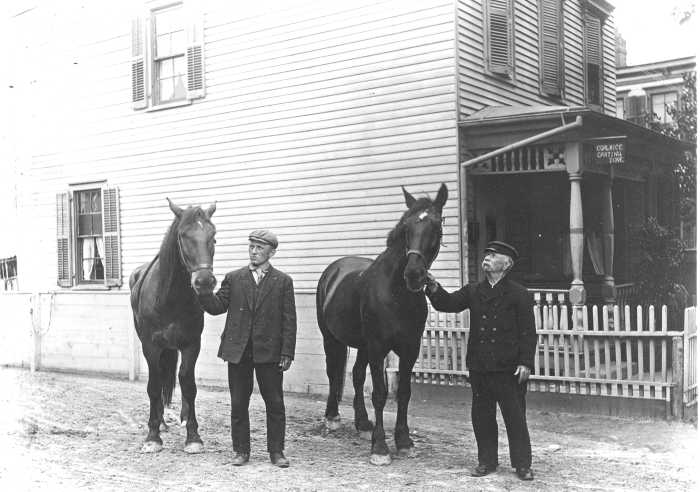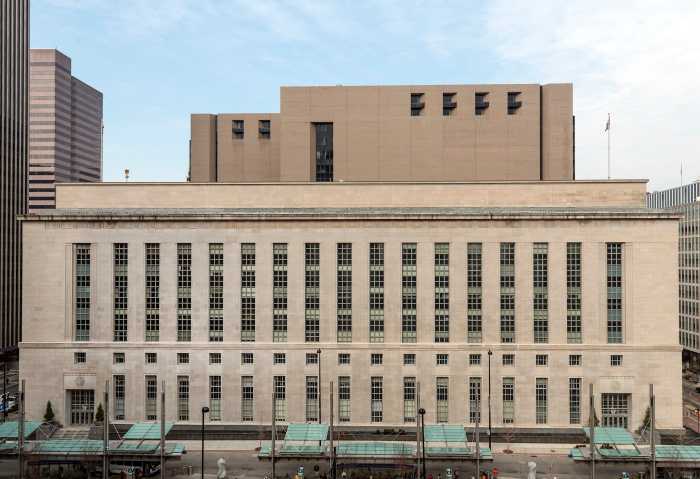By Lincoln Anderson
From a rally outside its headquarters to hearings by the City Council and State Assembly, the heat was turned up on Con Edison last week to insure that its manholes and street service boxes are safe.
On Wednesday, Councilmember Margarita Lopez led a march of 50 people, most of them with dogs, from Tompkins Sq. Park to Con Edison’s headquarters on Irving Pl. On the way, they stopped at the spot where Jodie Lane, 30, had been electrocuted on top of a slush-covered Con Edison service box cover while walking her dogs on Jan. 16. Lopez asked for a moment of silence and they left a wreath of white roses.
Marchers included Kelli Green, 36, a friend of Lane’s who had been talking to Lane on her cell phone and planning brunch for the next day when the tragic incident occurred.
“I heard the loud noise of the dogs fighting,” Green recalled. “She said, ‘I’ve got to go.’ ”
There was also Lynn Pacifico of the West Village who said her dogs have been zapped by hot spots on slush-covered streets before.
“One of my dogs has been shocked three times,” she said. “His legs have never been the same.”
Joe Serrano, 53, a horror writer from the East Village, doesn’t own a dog, but was marching anyway.
“I just don’t want to be electrocuted,” he said.
Kenny Pet, 43, was carrying a sign criticizing Governor Pataki and the Public Service Commission.
“Ultimately, Pataki appoints the top Public Service Commission officers,” Pet said. “They do whatever the top executives of the power companies want.”
Garrett Rosso, a co-manager of the Tompkins Sq. Dog Run, said lampposts, administered by the Department of Transportation, also pose a hazard and that he’d noticed 12 open hatches on lampposts along Avenue B, exposing wires, just two days earlier.
Outside Con Edison headquarters, Lopez, shouting through a bullhorn, led the demonstrators in chants of “Shame! Shame!” and “Remember Jodie!”
“Con Edison has to be stopped. This is not the first time Con Edison has disrespected the people of the Lower East Side,” she said, ticking off a list of the company’s past transgressions in her district, from pollution from the E. 14th St. power plant to blackouts.
Lopez announced she will introduce legislation in the Council on Feb. 26 that will require that Con Ed inspect its 250,000 manholes and service boxes annually, perhaps before each winter; a supervisor would be required to verify that the inspections were made and that each facility was safe. Lopez’s legislation would also require Con Ed to be responsible for all its subcontractors’ work. She is also drafting legislation that would require Con Ed to train all first responders, including police officers, on how to respond to electrical accidents.
Gunnar Hellekson, a member of the Tompkins Sq. Dog Run, said residents want not just inspections, but a safety plan. Susan Stetzer, a member of Community Board 3, also said a safety plan is needed.
On Thursday the City Council held a hearing on Con Edison and on Friday, the Assembly’s Energy Committee held a hearing.
In response to grilling by Assembly Speaker Sheldon Silver on precisely what went wrong inside the fatal E. 11th St. service box to cause its electrification, Kevin Burke, Con Ed president, said that the tape sealing the end of wire had shifted, rather than decayed.
“This was not a breakdown in the tape — but more of a movement in the tape,” Burke said. “We think this is a very unique set of circumstances we don’t fully understand.”
Burke said that only when a person or dog is reported injured by a shock is the incident reported to the Public Service Commission. He said Con Ed responds to all complaints of shocks, even less serious ones, however.
“Most of the time when we go out, we don’t find anything energized,” he said.
Assemblymember Paul Tonko showed graphs illustrating how Con Ed’s maintenance budget has decreased 29 percent in recent years. But Burke said this was because of Con Ed’s closing of its Indian Point 2 nuclear power plant in 2001 and closing its fossil-fuel-burning electricity generation plants. Con Ed is primarily only in the electricity distribution business now; but Burke said Con Ed is busy expanding its distribution capacity because people use more electricity nowadays, because of computers and cheaper air conditioners that are on the market.
Burke defended Con Ed’s record, noting, “We are the most reliable [utility] in the nation, if not the world.”
Burke said Con Ed will do annual inspections on manholes and service boxes for stray voltage and that whenever Con Ed workers go into manholes to make repairs they will now also check for stray voltage. In the past, Con Ed inspected its facilities visually, but did not check for stray voltage.
However, Manny Hellen, president of Local 1-2 Utility Workers Union of America, said that during its recent inspection of its facilities, during which over 100 hot spots were discovered, Con Ed did not do a visual check inside the manholes and service boxes, just a voltage check.
“I know, because our guys did it,” said Hellen, stressing that both voltage checks and visual inspections should be done.
Assemblymember Richard Brodsky said, “I think it’s pretty clear that visual inspections are no longer adequate.” He also asked why so many of the hot spots turned out to be in Lower Manhattan, specifically in Silver’s and Assemblymember Deborah Glick’s districts, to which Burke said there’s just more wiring in Manhattan.
“Why would Greenwich Village or the East Village be denser than Harlem?” Brodsky asked. Burke said they haven’t looked into it.
“The tragedy of Jan. 16 was not an isolated incident. It was an inevitability given the policies of the company,” said Brodsky. “I’m clear in my mind that these procedures and policies were insufficient to protect the public. There was a systemic failure here and that’s what caused this tragedy.”
Read More: https://www.amny.com/news/conservation-voters-endorse-john-kerry/













